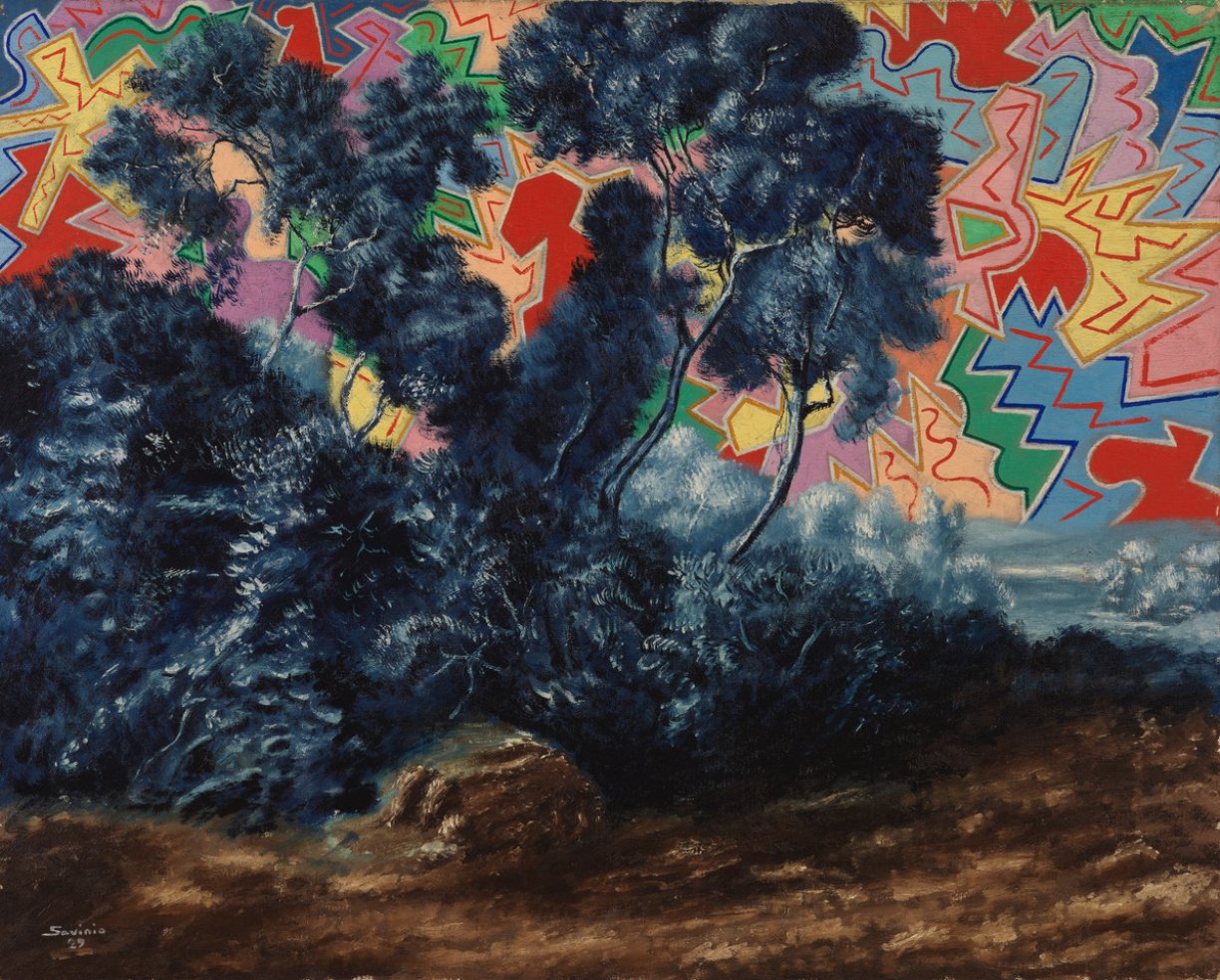Albert Savinio: Les chants de la mi-mort (1914)
Thursday, June 21st, ISSUE Project Room, in partnership with the Center for Italian Modern Art (CIMA), presents an evening of experimental opera curated by Lauren Rosati. The program features the first American re-staging of Alberto Savinio’s 1914 avant-garde operetta Les chants de la mi-mort (Songs of the Half-Dead) and the New York City concert premiere of the latest scene in composer-vocalist Nick Hallett’s serial opera, To Music.
The performances take take place prior to the final weekend of CIMA’s presentation of work by Alberto Savinio, the first U.S. exhibition of the artist’s paintings in over two decades. Hailed by poet and critic Guillaume Apollinaire as the paragon of a Renaissance man, Savinio was not only an exceptional visual artist and member of the Parisian avant-garde, but also a gifted pianist, composer, musicologist, set designer, critic, and writer. Yet despite his achievements, Savinio, the younger brother of Giorgio de Chirico, is today virtually unknown outside of Italy.
Originally staged in the offices of Apollinaire’s review Les Soirées des Paris on May 21st, 1914, where it was performed in French and Italian, Savinio’s Les chants de la mi-mort centers around a family drama during the period of the nineteenth-century Italian Risorgimento. Savinio intended this intermedia work, which combined music, literature, theatre, set design, and costumes, as a kind of Gesamtkunstwerk: a total work of art. The operetta’s characters (among them “a mad king” and “the bald man”) and scenic descriptions (including a tower, an equestrian statue, and cannon) inspired the metaphysical paintings of de Chirico. The dramatic text, as well as the piano score, incorporate noises and lighting effects—the sound of artillery fire, the flashing beam of a lighthouse—which are hallmarks of early Italian Futurist theater. The theme of this dissonant, absurdist operetta has very little to do with the Risorgimento itself; rather, its subject matter and mood pertains to Savinio’s conception of “half-death”: a state suspended between dream and reality, requiring an expansion of one’s faculties of perception to understand the world. While documentation of the original costumes and sets has been lost, and there is no information on the relationship between the music and libretto, this modern reconstruction of Les chants de la mi-mort relies on extant materials and primary sources to reimagine the production for new audiences.
The operetta will be presented in two acts: first, a dramatic reading of the libretto by mezzo-soprano Lucy Dhegrae and baritone Mario Diaz-Moresco, with an original video by Reid Farrington and a score of noises by percussionist Clara Warnaar; and second, a premiere performance of the original score by the pianist Kathleen Supové, with vocals by Dhegrae and Diaz-Moresco and additional percussion by Warnaar. The whole production runs 40-50 minutes.
About Alberto Savinio
Hailed by poet and critic Guillaume Apollinaire as the paragon of a Renaissance man, Alberto Savinio (1891–1952) was not only an exceptional visual artist and member of the Parisian avant-garde, but also a gifted pianist, musicologist, set designer, critic, writer and composer of both music and dramatic theater. Born in Athens to Italian parents, Savinio wrote a number of piano compositions, operas, and ballet scores before producing Les chants de la mi-mort on May 21, 1914 at the offices of the journal Les Soirées des Paris. In attendance at the concert were artists Pablo Picasso, Giorgio de Chirico (Savinio’s brother), Francis Picabia, Alexander Archipenko, Ardengo Soffici, and Max Jacob; poet Blaise Cendrars; and dealer Paul Guillaume. In the June 1, 1914, issue of the Mercure de France, Apollinaire later recounted the violent passion with which the composer performed: “I was fascinated and at the same time amazed because Savinio abused the instrument he was playing to such a degree that, at the end of each work, pieces of the upright fell off, so another piano had to be brought in, and was immediately smashed to pieces. I am sure that within two years he will destroy every piano in Paris.” Despite his significant contributions to twentieth century art and music, Savinio is today virtually unknown outside of Italy.
Videogrpahy by Yiyang Cao. Audio recorded by Bob Bellerue. Edited by James Emrick.

